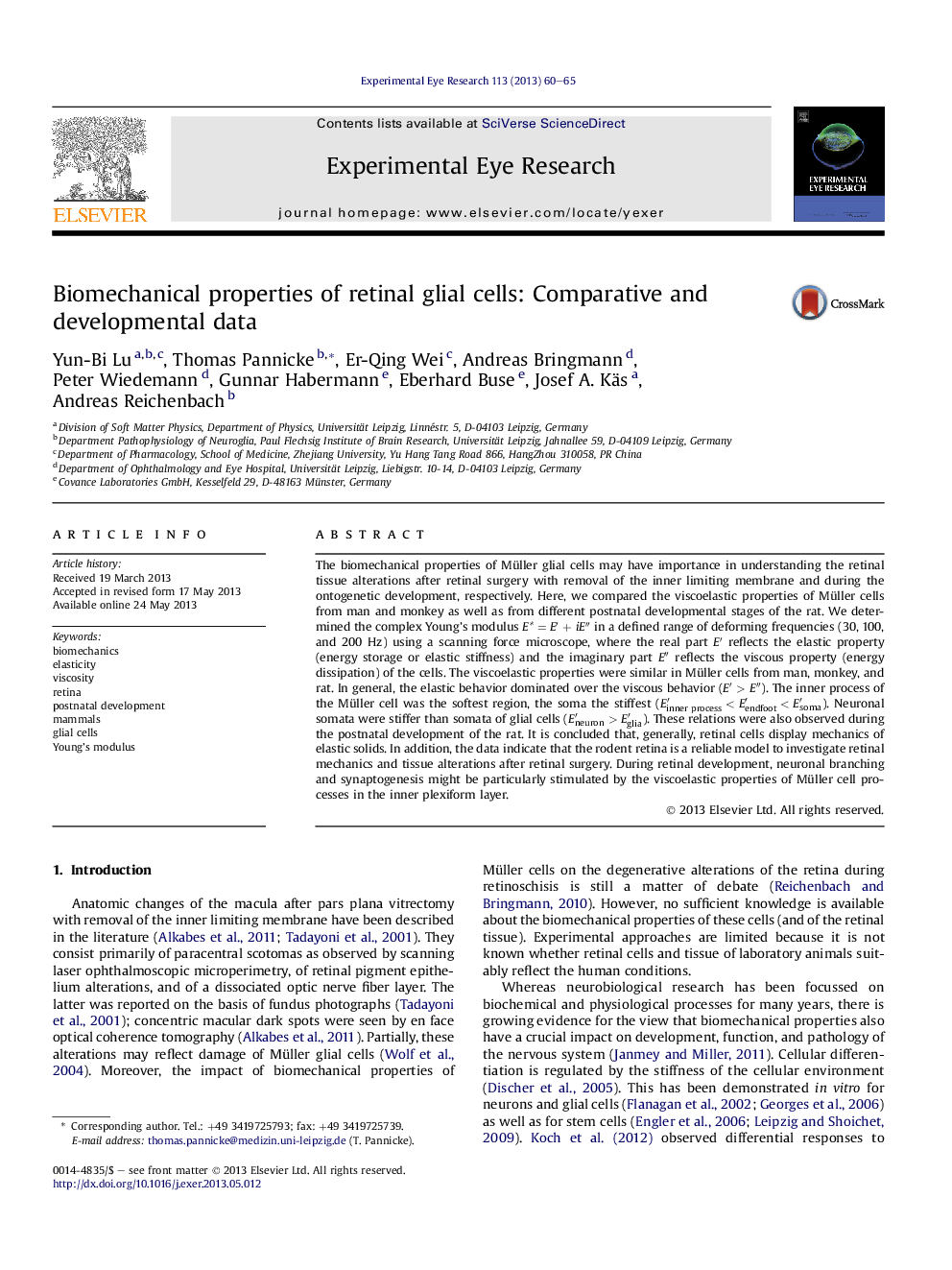| Article ID | Journal | Published Year | Pages | File Type |
|---|---|---|---|---|
| 6197260 | Experimental Eye Research | 2013 | 6 Pages |
â¢We investigated the viscoelastic properties of retinal Müller glial cells.â¢The viscoelastic properties were similar in Müller cells from man, monkey, and rat.â¢The inner process of the cell was always the softest region, the soma the stiffest.â¢Neuronal somata were stiffer than somata of glial cells.
The biomechanical properties of Müller glial cells may have importance in understanding the retinal tissue alterations after retinal surgery with removal of the inner limiting membrane and during the ontogenetic development, respectively. Here, we compared the viscoelastic properties of Müller cells from man and monkey as well as from different postnatal developmental stages of the rat. We determined the complex Young's modulus E* = Eâ²Â + iEâ³ in a defined range of deforming frequencies (30, 100, and 200 Hz) using a scanning force microscope, where the real part Eâ² reflects the elastic property (energy storage or elastic stiffness) and the imaginary part Eâ³ reflects the viscous property (energy dissipation) of the cells. The viscoelastic properties were similar in Müller cells from man, monkey, and rat. In general, the elastic behavior dominated over the viscous behavior (Eâ²Â > Eâ³). The inner process of the Müller cell was the softest region, the soma the stiffest (Einnerprocessâ²
